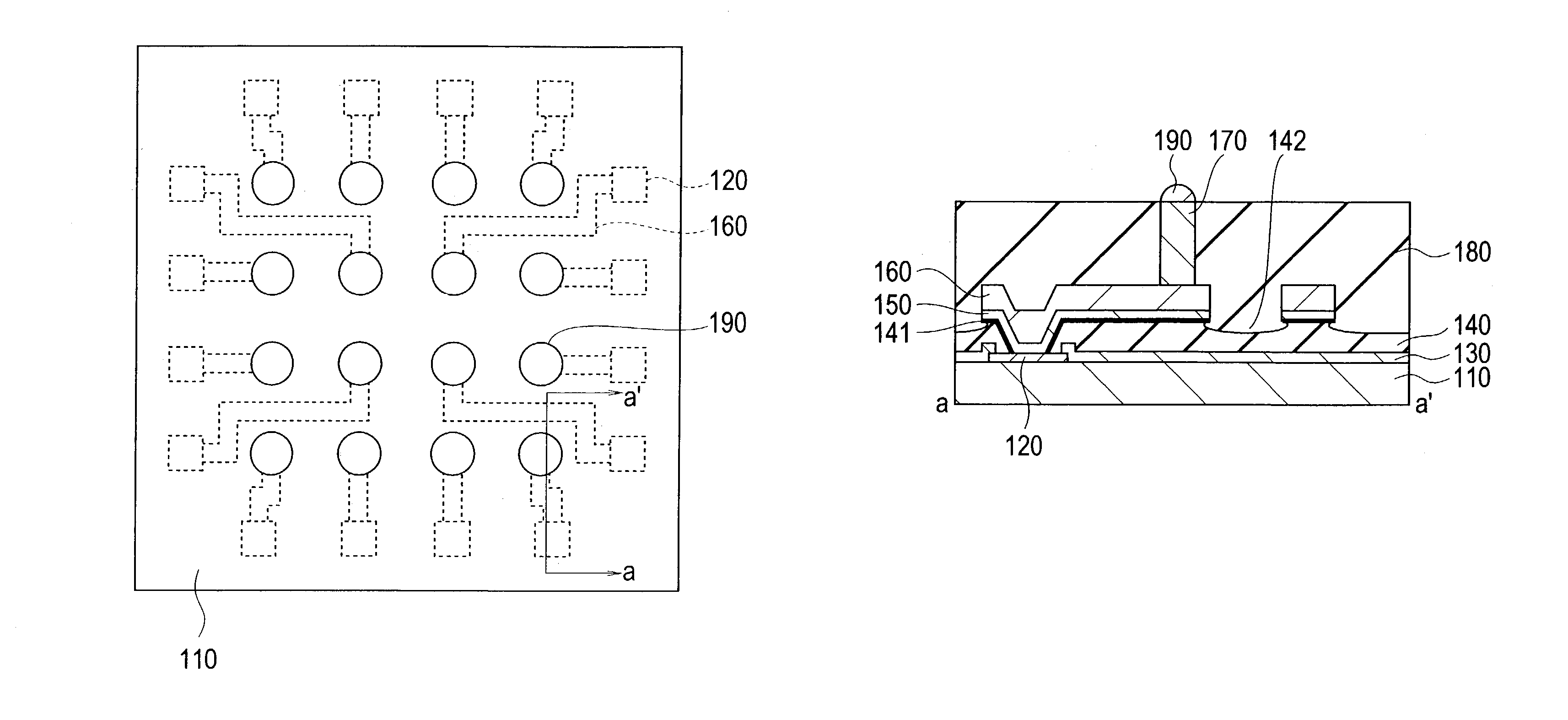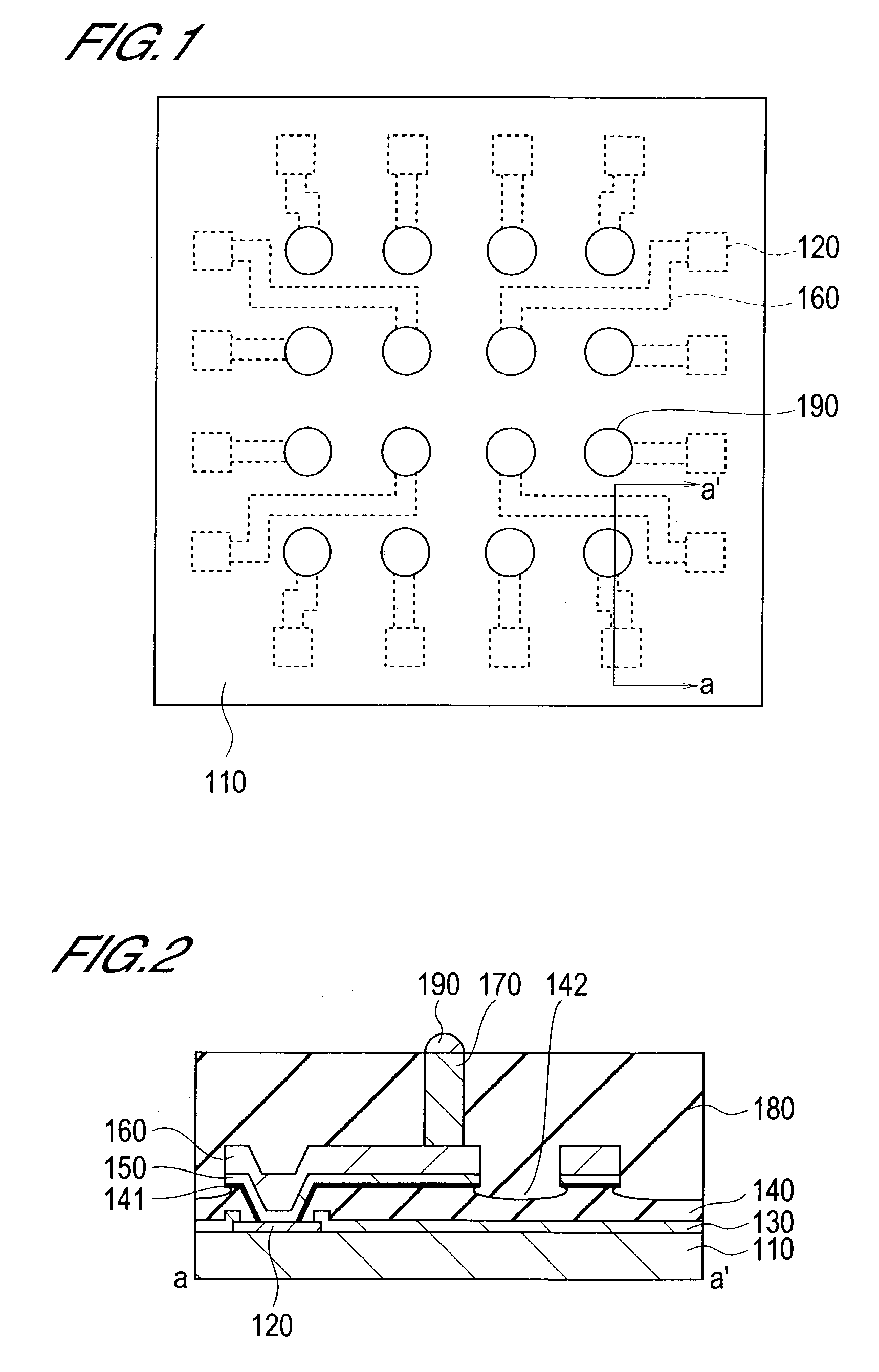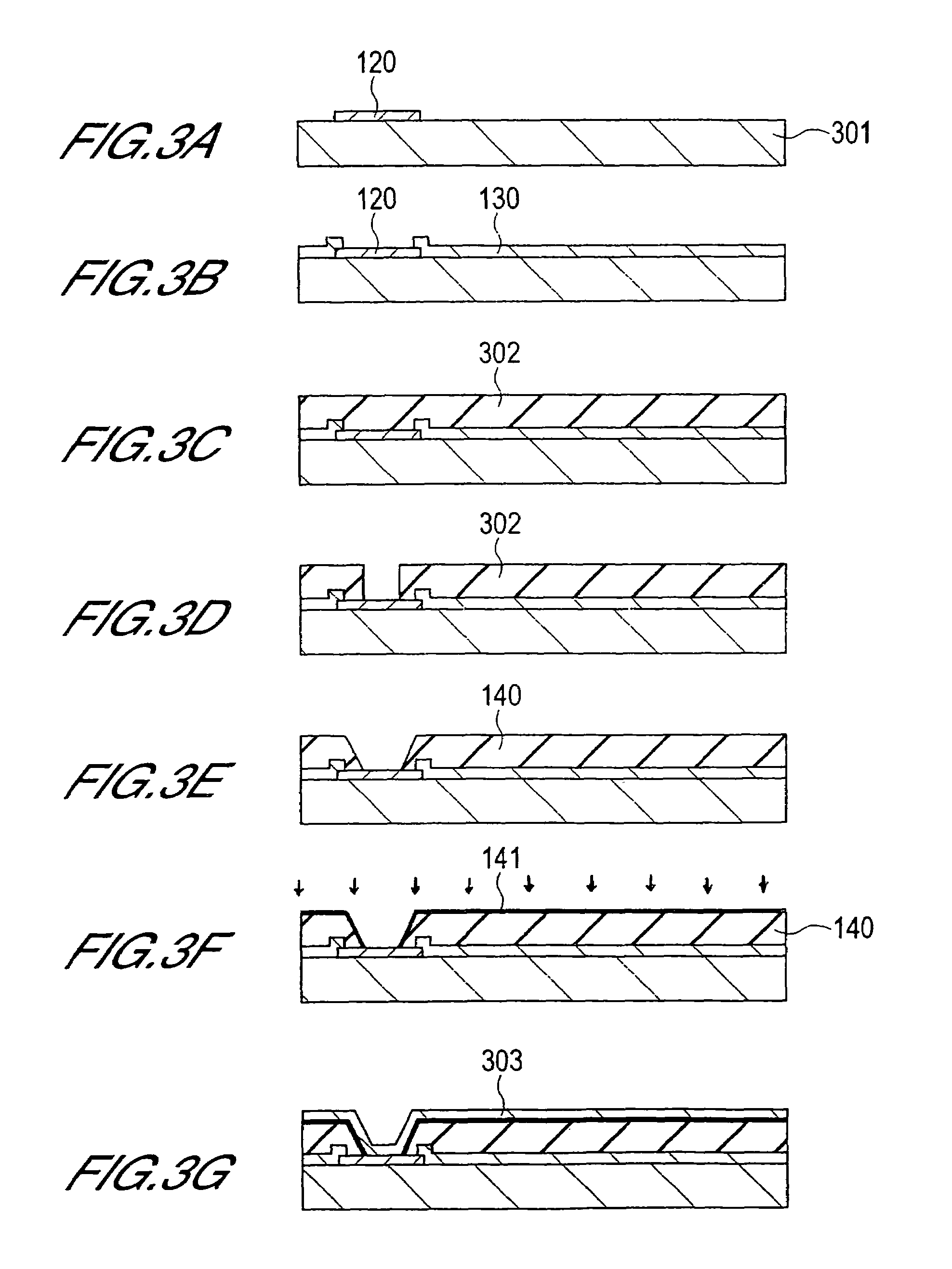Semiconductor device and method for manufacturing
- Summary
- Abstract
- Description
- Claims
- Application Information
AI Technical Summary
Benefits of technology
Problems solved by technology
Method used
Image
Examples
first embodiment
[0027]Firstly, a first embodiment of the invention will be explained with reference to FIGS. 1 to 6.
[0028]FIG. 1 shows a plan view of the structure of the essential parts of the semiconductor device according to this embodiment, FIG. 2 is a diagram of a section along the line a-a′ in FIG. 1.
[0029]As shown in FIGS. 1 and 2, the semiconductor device according to this embodiment comprises the substrate 110, electrode pad 120, protective film 130, interlayer film 140, metallic thin film 150, metallic wiring 160, bump 170, sealing film 180 and external terminal 190. Only the substrate 110, electrode pad 120, metallic wiring 160, and external terminal 190 are shown in FIG. 1.
[0030]The substrate 110 is, for example, rectangular in shape. The size of this substrate 110 is, for example, 8 mm×8 mm or 9 mm×9 mm. As mentioned below, this substrate 110 can be obtained by dicing the wafer after the sealing film 180 has been formed.
[0031]Integrated circuits (not shown in the figures) are formed on...
second embodiment
[0070]Next, a second embodiment of the present invention will be explained with reference to FIGS. 7 and 8.
[0071]FIG. 7 is a sectional diagram of this embodiment, corresponding to the cross section along line a-a′ in FIG. 1. In FIG. 7, wherever the same symbols are used as in FIG. 2, they refer to the same structural elements as in FIG. 2.
[0072]In the semiconductor according to this embodiment, the trench formed in the interlayer film 140 differs from that according to the first embodiment.
[0073]In this embodiment, the trench 701 is formed by means of plasma etching. By using a plasma etching method, it is possible to carry out highly anisotropic etching. In other words, when plasma etching is used, even though the depth of the trench 701 is made large, the amount of etching in the direction parallel to the substrate 110 does not become very large. Therefore, the plasma etching can form a deep trench 701 without removing the interlayer film 140 directly below the metallic thin film ...
third embodiment
[0084]Next, the third embodiment of the present invention will be explained with reference to FIGS. 9, 10 and 11.
[0085]FIG. 9 is a sectional diagram of this embodiment, corresponding to the sectional view along line a-a′ in FIG. 1. In FIG. 9, wherever the same symbols are used as in FIG. 2, they refer to the same structural elements as in FIG. 2.
[0086]In this embodiment, the formation of the trench after the formation of the bump 170 as in each of the embodiments above does not take place and the trench 901 is formed at the same time as the etching of the interlayer film 140 for the purpose of exposing the center part of the electrode pad 120. In this embodiment, the surface of the interlayer film 140 is modified after the trench 901 is formed so that the modifying layer 902 is also formed on the surface of the trench 901.
[0087]The method of manufacturing this embodiment will be explained below in detail with reference to FIGS. 10 and 11.
[0088]Firstly, in the same way as in the firs...
PUM
 Login to View More
Login to View More Abstract
Description
Claims
Application Information
 Login to View More
Login to View More - R&D
- Intellectual Property
- Life Sciences
- Materials
- Tech Scout
- Unparalleled Data Quality
- Higher Quality Content
- 60% Fewer Hallucinations
Browse by: Latest US Patents, China's latest patents, Technical Efficacy Thesaurus, Application Domain, Technology Topic, Popular Technical Reports.
© 2025 PatSnap. All rights reserved.Legal|Privacy policy|Modern Slavery Act Transparency Statement|Sitemap|About US| Contact US: help@patsnap.com



